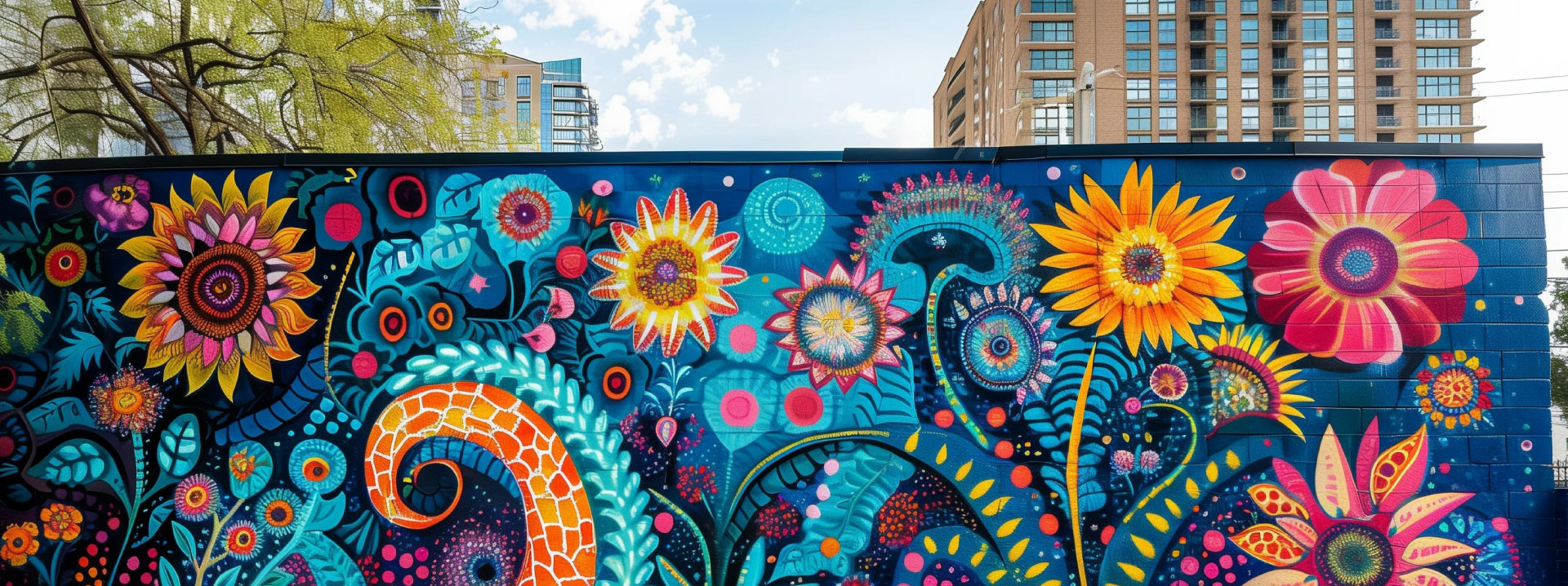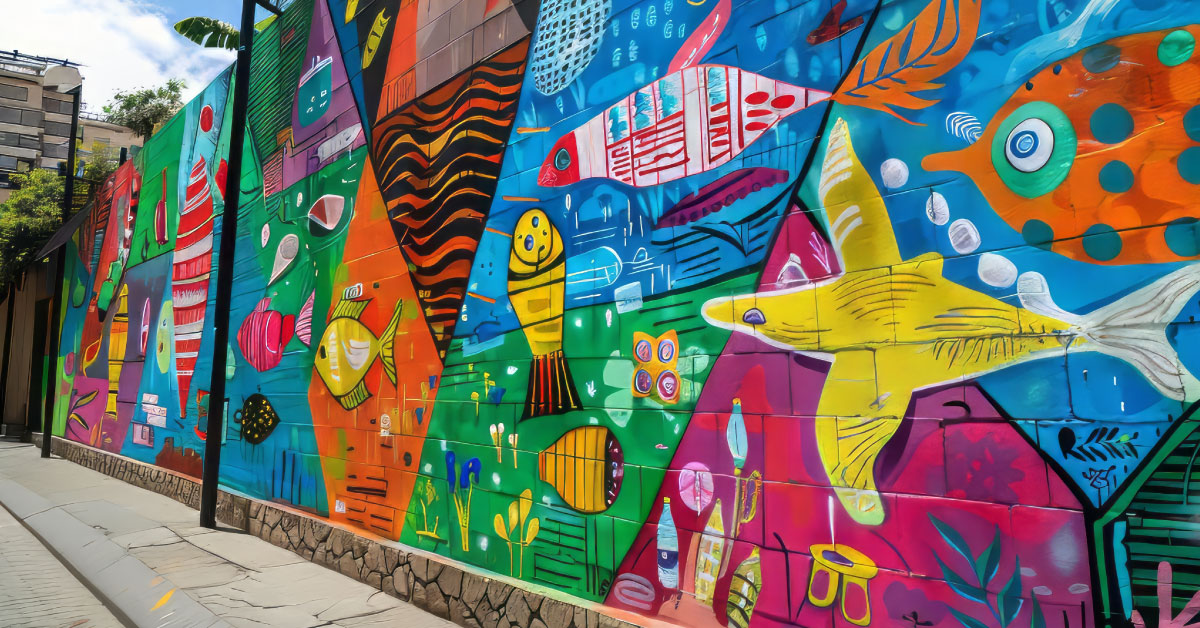Public art, especially murals and street art, has become an integral part of urban landscapes worldwide. These vibrant and dynamic forms of expression transcend the confines of traditional galleries, bringing art into the everyday lives of people. From bustling city centers to quiet neighborhoods, murals and street art have the power to transform mundane spaces into captivating canvases, sparking conversations and fostering a deeper connection between art and the community. This article delves into the significance of public art, exploring how it not only beautifies our surroundings but also serves as a powerful tool for social and cultural commentary.
The impact of public art on communities is profound, fostering a sense of pride and identity while also stimulating economic growth through increased tourism and local business support. Murals and street art provide a platform for marginalized voices, often addressing pressing social issues and celebrating cultural heritage. By examining notable examples from around the world, we gain insight into the global influence of street art and its ability to inspire and provoke thought. However, the journey of creating and maintaining public art is not without its challenges and controversies, which we will explore further in this article.
The Significance of Public Art: Transforming Urban Landscapes
Public art, particularly in the form of murals and street art, plays a crucial role in enhancing the visual and cultural landscape of urban environments. These artistic expressions are not confined to the walls of museums and galleries but are instead integrated into the very fabric of the cities they inhabit. By bringing art to the streets, artists can reach a diverse audience, making art accessible to everyone regardless of their socioeconomic status. This democratization of art helps to break down barriers and fosters a more inclusive cultural dialogue within the community.
The significance of public art extends beyond mere aesthetics. Murals and street art serve as powerful tools for storytelling, allowing artists to communicate social, political, and cultural messages that resonate with the public. They often reflect the unique history and identity of the neighborhoods in which they are situated, creating a sense of place and belonging. By transforming blank walls into vibrant canvases, public art can revitalize neglected areas, infusing them with color and creativity, and ultimately contributing to the overall well-being and vitality of the community.

Community Impact: Fostering Pride and Economic Growth
Public art has a profound impact on communities, fostering a sense of pride and identity among residents. Murals and street art often reflect the unique character and history of the neighborhoods in which they are located, creating a sense of ownership and belonging. These artworks become landmarks and points of pride, enhancing the community’s cultural fabric and encouraging civic engagement. By bringing art into public spaces, communities can celebrate their heritage, commemorate important events, and promote social cohesion, all of which contribute to a stronger and more vibrant community spirit.
Beyond its cultural and social significance, public art also has tangible economic benefits. Murals and street art can attract tourists, drawing visitors to explore and appreciate the local area. This increased foot traffic can boost local businesses, creating economic opportunities and stimulating urban revitalization. Additionally, public art projects often involve collaboration between artists, local organizations, and residents, fostering a sense of collaboration and investment in the community. By transforming public spaces into visually appealing and culturally rich environments, public art can play a pivotal role in the economic and social development of urban areas.
Social and Cultural Commentary: Amplifying Voices Through Art
Street art and murals serve as powerful platforms for social and cultural commentary, providing artists with a medium to express their perspectives on contemporary issues. Unlike traditional art forms confined to galleries, public art reaches a broad audience, engaging people in dialogue about topics that matter to the community. These artworks often address pressing social issues such as inequality, injustice, and environmental concerns, amplifying the voices of marginalized groups and sparking important conversations. By bringing these themes into public spaces, street art can challenge perceptions, raise awareness, and inspire collective action.
In addition to addressing social issues, murals and street art celebrate cultural heritage and identity. Artists use public spaces to honor historical events, cultural icons, and traditions, fostering a sense of pride and continuity within the community. This celebration of culture through art helps to preserve and promote the unique stories and identities of different communities, making public spaces more inclusive and representative. By intertwining social commentary with cultural celebration, street art enriches the public realm, making it a vibrant and dynamic canvas that reflects the diverse experiences and values of its inhabitants.
Notable Street Art: Global Icons of Creativity and Expression
Around the world, certain murals and street art pieces have risen to iconic status, becoming landmarks in their own right and attracting global attention. In the United Kingdom, Banksy’s thought-provoking works are renowned for their clever social commentary and distinctive style, often sparking debates and drawing crowds. The East Side Gallery in Berlin, a preserved section of the Berlin Wall, features a collection of murals that commemorate the city’s history and the fall of the Iron Curtain. These artworks not only enhance the visual landscape but also serve as powerful historical and political symbols.
In cities like New York, Los Angeles, and Rio de Janeiro, vibrant murals adorn the streets, reflecting the diverse cultures and dynamic energy of these urban environments. In New York’s neighborhoods like Bushwick and Harlem, murals celebrate cultural heritage and community pride, while in Los Angeles, districts like the Arts District showcase a blend of graffiti and street art that has turned the area into a creative hub. Rio de Janeiro’s favelas feature large-scale murals that bring color and hope to these communities, highlighting the transformative power of art. These examples demonstrate the global reach and influence of street art, illustrating how it can inspire, provoke, and unite people across different cultures and backgrounds.

Challenges and Controversies: Navigating the Complexities of Public Art
Despite its many benefits, public art is not without its challenges and controversies. One major issue is the debate over artistic merit and the fine line between street art and vandalism. While some view street art as a legitimate and valuable form of artistic expression, others see it as an act of defacement. This tension often leads to conflicts between artists, property owners, and municipal authorities, resulting in legal battles and the removal of artwork. Additionally, the transient nature of street art, subject to weathering and intentional destruction, raises questions about preservation and the ephemeral quality of this art form.
Creating and maintaining public art also involves significant logistical and financial hurdles. Securing funding for public art projects can be difficult, often relying on grants, donations, and community support. Artists must navigate a complex web of permissions and regulations, requiring cooperation from local governments and property owners. Community support is crucial, as public art can sometimes be met with resistance from residents who may not agree with the artwork’s message or aesthetic. Despite these challenges, many artists and communities persevere, recognizing the profound impact that public art can have on enriching public spaces and fostering dialogue.
The Transformative Power of Murals and Street Art
Murals and street art hold a transformative power that extends beyond mere aesthetics, playing a pivotal role in enhancing urban landscapes, fostering community pride, and driving economic growth. As we have seen, the significance of public art lies not only in its ability to beautify spaces but also in its capacity to democratize art, making it accessible to everyone and breaking down social barriers. Through vibrant and thought-provoking works, street art brings to life the stories, struggles, and aspirations of the communities it inhabits, creating a shared sense of identity and belonging.
The global influence of notable street art examples, coupled with the powerful social and cultural commentary they often provide, highlights the universal appeal and impact of this art form. While challenges and controversies surrounding public art persist, the continued efforts of artists, communities, and supporters underscore its enduring value. By navigating these complexities, public art not only survives but thrives, enriching our public spaces and sparking meaningful dialogue. As we move forward, it is crucial to recognize and support the vital role of murals and street art in shaping the cultural and social fabric of our urban environments.












